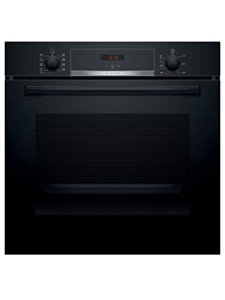The Rise of Built-In Ovens: A Seamless Approach to Modern Cooking
In contemporary cooking areas, where design aesthetics mix perfectly with functionality, one appliance stands apart as a real game changer: the built-in oven. As property owners and chefs alike continue to seek ingenious services that improve their cooking experience, built-in ovens have ended up being progressively popular. This post checks out the advantages, considerations, and patterns surrounding built-in ovens, highlighting why they are an important function in modern-day cooking spaces.
What is a Built-In Oven?
A built-in oven is a kitchen area device created to be integrated into the cabinetry of a kitchen area rather than standing alone. Unlike traditional freestanding ovens, which can be moved and positioned anywhere, built-in ovens been available in different designs and sizes to fit particularly within designated areas. Readily available in single or double setups, these ovens offer a streamlined appearance that complements modern-day cooking area styles.
Benefits of Built-In Ovens
1. integrated ovens and hobs -Saving Design
Among the most attractive benefits of built-in ovens is their space-saving style. By integrating the oven into kitchen cabinetry, you can release up valuable counter and flooring area. This is especially beneficial in smaller sized kitchens, where optimizing room is important. Built-in ovens can be set up at eye level, making them more accessible and minimizing the need to flex down.
2. Aesthetic Appeal
Built-in ovens add to a streamlined and cohesive cooking area design. Offered in numerous surfaces-- such as stainless-steel, black, white, and custom-made cabinetry-- they can blend seamlessly into the general decoration. This aesthetic appeal enhances the kitchen area's visual harmony and raises the area, developing a modern-day and advanced atmosphere.
3. Improved Functionality
Lots of built-in ovens come geared up with advanced cooking technologies, such as convection cooking, steam ovens, and wise features. These enhancements enable for flexible cooking options, making it simpler to accomplish professional-level outcomes in the house. Smart built-in ovens can even connect to Wi-Fi, enabling users to manage the oven from another location, get alerts, and access a variety of cooking programs and recipes.
4. Improved Ventilation
Since built-in ovens can be integrated with kitchen area hoods and ventilation systems, they can assist maintain much better air quality and minimize cooking smells. This is specifically substantial for those who enjoy to cook with aromatic spices and active ingredients, as an efficient ventilation system can keep the kitchen comfy and inviting.
5. Customization Options
Built-in ovens offer a large range of customization alternatives to fit individual cooking styles and requirements. From professional-grade appliances with numerous cooking modes to compact styles for smaller sized cooking areas, property owners can pick the oven that fits their particular requirements. Lots of makers likewise provide adjustable front panels, enabling you to match the oven's look to your cabinetry for a really combined look.
Considerations When Choosing a Built-In Oven
While built-in ovens have many advantages, there are essential considerations to remember before making a purchase:
1. Rate
Built-in ovens typically include a greater rate tag than their freestanding equivalents due to their style and setup requirements. It's important to element in both the cost of the oven and any extra costs connected to cabinets modifications or setup.
2. Setup Requirements
Setting up a built-in oven often needs professional assistance, specifically if you need to customize existing cabinetry. Make sure that you consider any expenses associated with installation, including labor and prospective kitchen cabinetry changes.
3. Size and Dimensions
Before acquiring a built-in oven, measure the designated area properly to make sure a proper fit. Built-in ovens been available in various sizes and configurations, so choosing one that lines up with your needs and kitchen area style is vital.
4. Way of life and Usage
Consider your cooking routines and requires when picking a built-in oven. If you regularly host large gatherings, a double oven may be more useful. On the other hand, if you have a compact kitchen area, a single-wall oven may be adequate.
Patterns in Built-In Ovens
The kitchen area appliance market is constantly progressing, and built-in ovens are not exempt from emerging trends. Some existing trends include:

Smart Technology Integration: With the rise of smart home innovation, built-in ovens now frequently feature connectivity choices. This allows users to keep track of cooking development and adjust settings through mobile apps.
Energy Efficiency: As sustainability ends up being a top priority, many makers are investing in energy-efficient built-in ovens that decrease energy consumption while preserving efficiency.
Multi-functional Designs: Built-in ovens now use functions such as air frying, slow cooking, and steaming, providing flexibility that meets a vast array of cooking techniques.
Conclusion
Built-in ovens certainly represent a best blend of style, function, and convenience in today's cooking areas. As more property owners select this modern option, the focus shifts to developing a cooking space that is as visually pleasing as it is practical. Whether you are developing a new home or remodeling your kitchen area, thinking about a built-in oven might elevate your culinary experience and transform your kitchen into an elegant and practical haven. With a variety of alternatives offered and continuous developments in technology, built-in ovens stay a standout option for both amateur cooks and cooking enthusiasts alike.
